Borage / Spring / Summer / Edible
A common annual, flowering plant. The leaves, stems and flowers are all edible.
Common Names
Borage, Star Flower, Herb of Courage.
Botanical Name
Borago Officinalis
Scientific Classification
Kingdom – Plantae
Order – Boraginales
Family – Boraginaceae
Physical Characteristics for Borage
Leaves
When mature the leaves are alternate, hairy, deeply veined and oval. They are typically 5-15cm long.
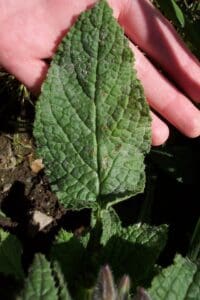
Flowers
The beautiful flowers are normally blue but some pink examples can be found in the wild. They have five narrow, pointed petals with hairy sepals showing in between them, and a dark, pointed cluster of anthers in the middle. The flowering season tends to be quite long anywhere from June to September or even longer in milder parts of the UK.
The main thing people confuse borage with is something called Green Alkanet (also edible) but the flowers are the easiest place to tell the difference, Borage has pointed tips at the end of each petal where as Green Alkanet has a round end without the sharp tip.
Stem
The stem is round and full with hairs all over that feel a bit furry, it’s quite succulent inside and if squeezed exudes a very sticky juice.
Habitat
Borage does grow in the wild but more often it’s seen as a planted species. It readily self-seeds so it will often reappear in the same locations each year.
Known Hazards
Care should be taken when using Borage seed oil, as it contains a small number of unsaturated pyrrolizidine alkaloids (UPAs) which are hepatotoxic, i.e. they cause liver damage.
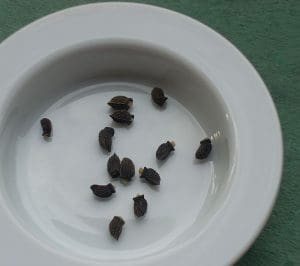
Could be Confused with…
Green Alkanet and Foxglove, but both of these plants have quite different flowers, so confusion would only come at the season when the flowers are not present. We always advise waiting for this plant to go in to flower at your local patch before being 100% confident on identification your first time around.
Edible Uses
The taste of Borage is quite similar to cucumber and the young leaves can be added to salads or used as a garnish. They can also be cooked like spinach.
Sometimes I’ll add a stem in to my G&T or summer sangria as if it with a stick of cucumber.
The flowers are a great addition to salads or they can be frozen in ice cubes and added to cocktails.
Borage is a rich source of vitamins A and C and minerals such as iron, calcium, potassium and magnesium.
Notes on Herbal Uses
Borage was used in the past to treat gastrointestinal, respiratory and cardiovascular disorders.
Extra notes from the Foragers
The common name ‘herb of courage’ derives from its use as a natural calming agent. Celtic warriors consumed wine flavoured with Borage before battle to settle nervous energy.
There is an old Latin verse that reads “I, Borage, always bring delight or courage.”



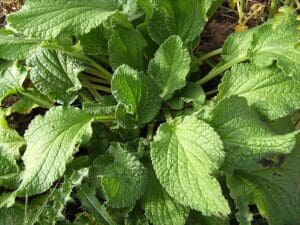
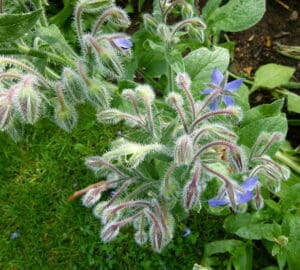
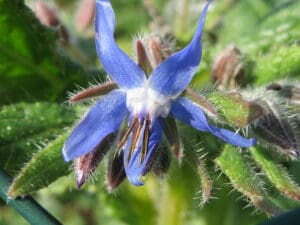
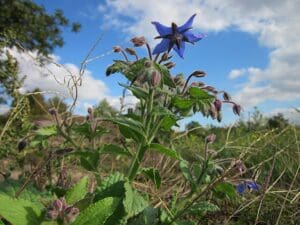
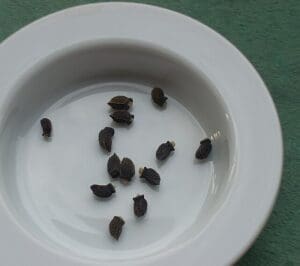
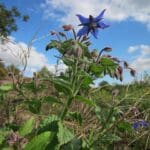
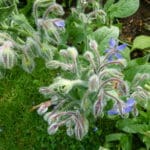
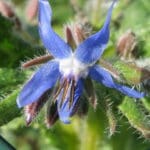



Leave a Reply
You must be logged in to post a comment.